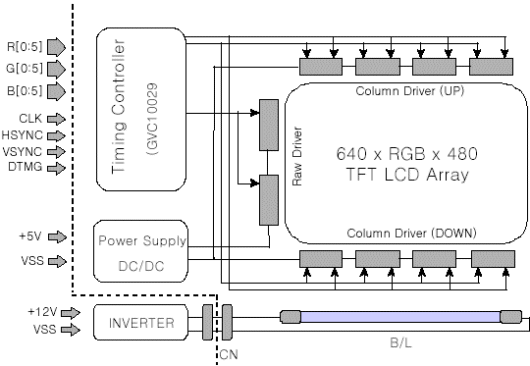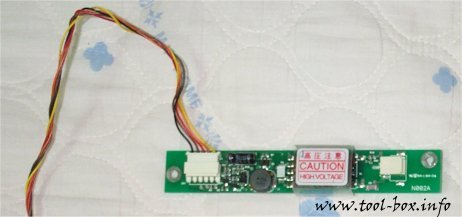Building LCD Monitor (4/9)
Posted by Wesley on
This is how the whole assembly of the LCD monitor is linked. We've already seen the LCD panel part (shown here as LCD Array), but it is apparent that other parts are needed for a properly functioning unit. Let's see what these other components do.

LCD does not, and cannot glow like the phosphor in CRT, so some sort light source must always be present. Some of the simple LCD displays use reflective sheet to utilize ambient light to function as a weak backlight. However, complex display like an LCD monitor needs a much stronger light source, and this is why a proper backlight is used. It is actually an array of Cold Cathode Fluorescent Tubes (CCFL) with a light diffusion panel that evenly distributes the light throughout the whole display area. CCFL is a type of a fluorescent lamp known for longevity and evenness in light transmission, and it is often found in scanners and copiers.
An observant reader will know that a fluorescent lamp operates on alternating current (AC). But the rest of the LCD monitor works on direct current (DC) as any normal electronic device would. Therefore, to operate the backlight off the common DC source, we need a module that converts DC into AC. This is the job of the inverter module as seen in the picture above. This component is noticeable by a small transformer that sits on the middle which is usually protected by a plastic cover. The one shown here has 'CAUTION HIGH VOLTAGE' written on it. If you were to take apart an LCD monitor or an old laptop computer, you will discover that the wires coming out of the backlight will lead to this module.